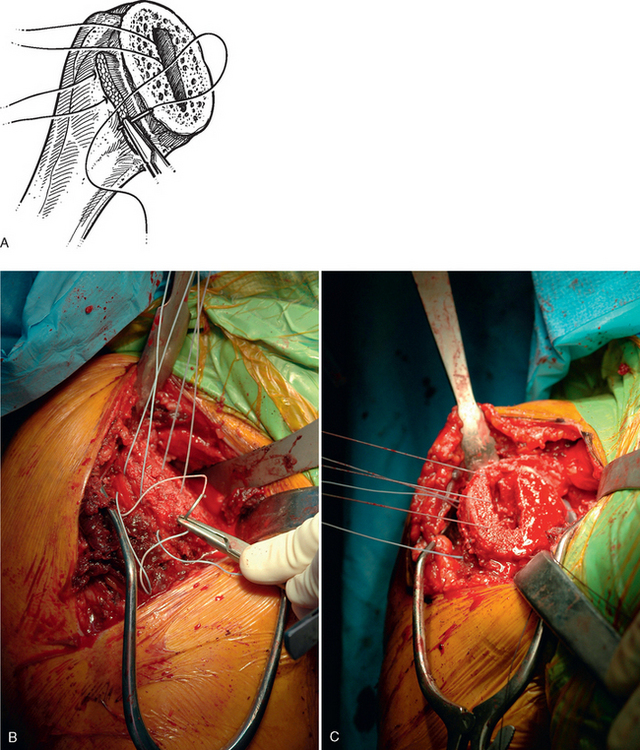CHAPTER 14 Subscapularis and Rotator Interval Repair
Failure of subscapularis repair occurs in 2% of patients after shoulder arthroplasty for primary osteoarthritis.1 Prognostic factors for the development of symptoms after subscapularis failure are unclear. Many patients will be asymptomatic after failure of subscapularis repair, with subscapularis weakness detected only on postoperative examination. However, symptoms of weakness or anterior instability (or both) will develop in some patients. Additionally, even in patients who are asymptomatic, concern exists over subscapularis failure’s causing eccentric anterior loading and subsequent loosening of the glenoid component. For these reasons every effort should be made to perform a secure subscapularis repair. We prefer a repair that incorporates both transosseous and transtendinous components. In addition to subscapularis repair, we also routinely close the rotator interval to further decrease the risk for postoperative glenohumeral instability.
TECHNIQUE FOR REPAIR OF THE SUBSCAPULARIS AND ROTATOR INTERVAL
After completing soft tissue balancing, final preparations are made for implantation of the humeral component and subsequent subscapularis repair. Three no. 2 nonabsorbable braided sutures are placed through the lesser tuberosity and the humeral stump of the subscapularis tendon, as detailed in Chapter 11, to be used for reattachment of the subscapularis (Fig. 14-1). These sutures are placed just before insertion of the final humeral implant. The final humeral implant is then impacted into place and its stability checked (Chapters 11 and 13).








